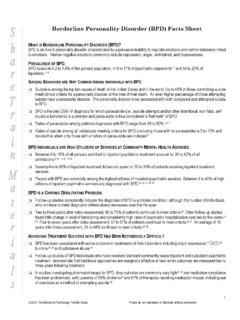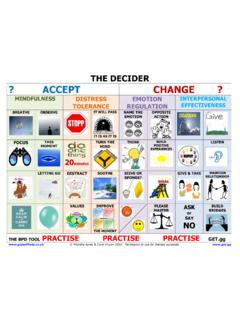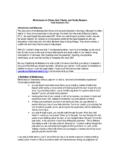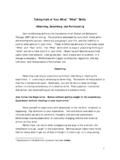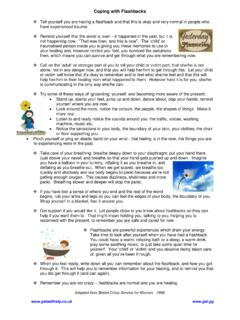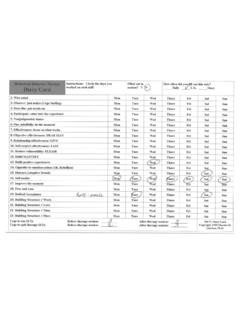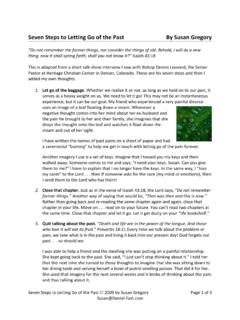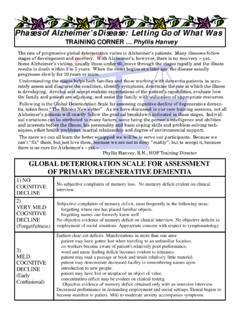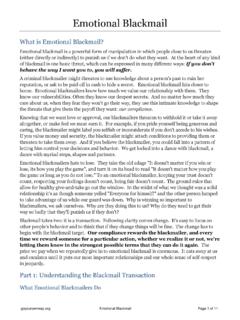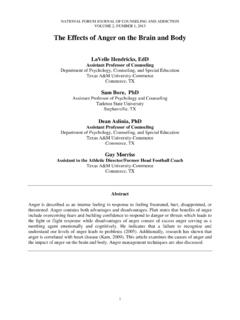Transcription of Defusion Techniques - DBT Self Help
1 Defusion Techniques Defusion involves seeing thoughts and feelings for what they are (streams of words, passing sensations), not what they say they are (dangers or facts). STOP, STEP BACK, OBSERVE (the thoughts and feelings, what's happening to/for the other person). Notice what's happening your thoughts, physical sensations, emotions, images, memories. Notice the way you're interpreting what they mean, and how that's affecting you. Notice the unhelpful thoughts. What am I reacting to? Perhaps say the thoughts very slowly, or very quickly, in a squeaky or comic voice, or write them down. Identify the emotion you're feeling, and label the unhelpful thoughts o an evaluation o a prediction o a feeling or sensation o a memory o an unhelpful thinking habit: mind-reading (believing we know or what others are thinking), negative filter (only noticing the bad stuff), emotional reasoning (I feel bad so it must be bad), catastrophising (imagining the worst), the internal critic etc.
2 Learn more and practice mindfulness so that you can be aware of when you are in the present moment rather than being in your head' - perhaps the past or future. Notice what you don't normally notice sights, sounds, sensations, thoughts, textures etc. Use metaphors try to see things differently. For example: Passengers on the Bus You can be in the driving seat, whilst all the passengers (thoughts) are being critical or shouting directions. You can allow them to shout, whilst focusing on the road ahead. Playground Bully (our thoughts can be our own internal bully). Victim 1 believes the bully, distressed, reacts automatically (bully carries on). Victim 2 challenges the bully (bully eventually gives up). Victim 3 acknowledges then ignores the bully, changing focus of attention.
3 The River Items floating down the river perhaps leaves or bits of mucky debris (thoughts, feelings, images) instead of struggling to float, we can stand on the bank watching it all go by The Beach Ball We try to stop thoughts we hold the ball under water, but it keeps popping up (thoughts). We can allow the ball to float around us, just letting it be. Thought train We can sit on the train, watching the scenery (thoughts, images, sensations) go by, or stand on the platform watching the thought train pass by we don't have to jump on it. The Tunnel When we get anxious driving through a tunnel, the best option is to keep going rather than try to escape. This feeling will pass there is an end to this tunnel. The Mountain Whatever the weather, or whatever happens on the surface of the mountain the mountain stands firm, strong, grounded, permanent.
4 We can be like that mountain, observing thoughts, feelings, sensations, knowing inner stillness. Vivyan 2009, Adapted from Ciarrochi & Bailey 2008.
